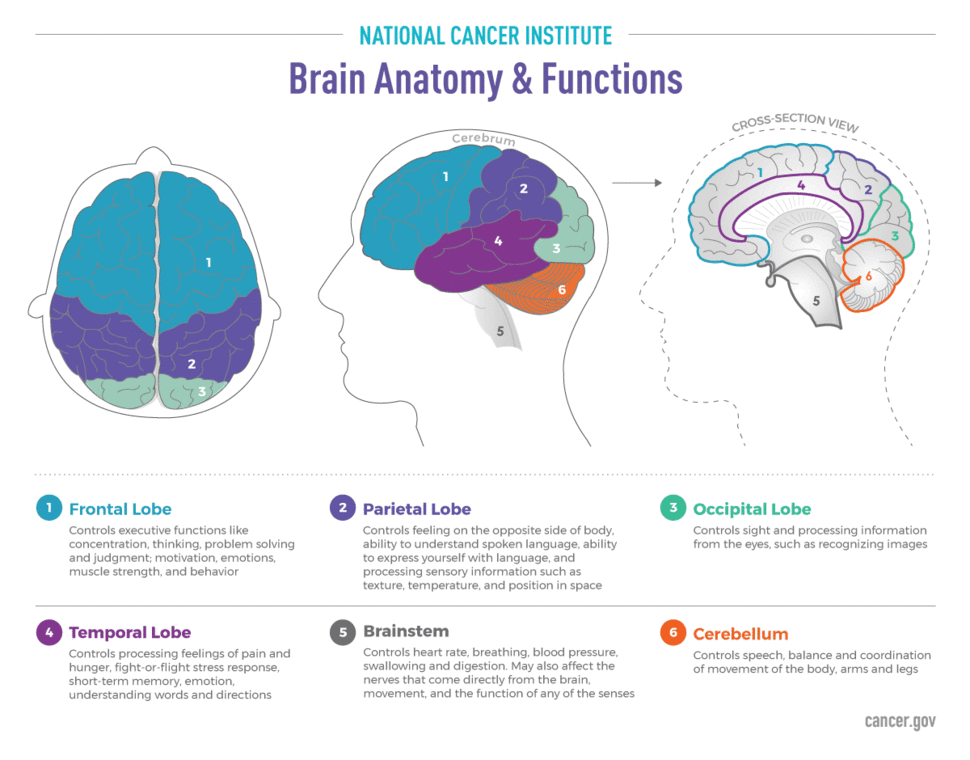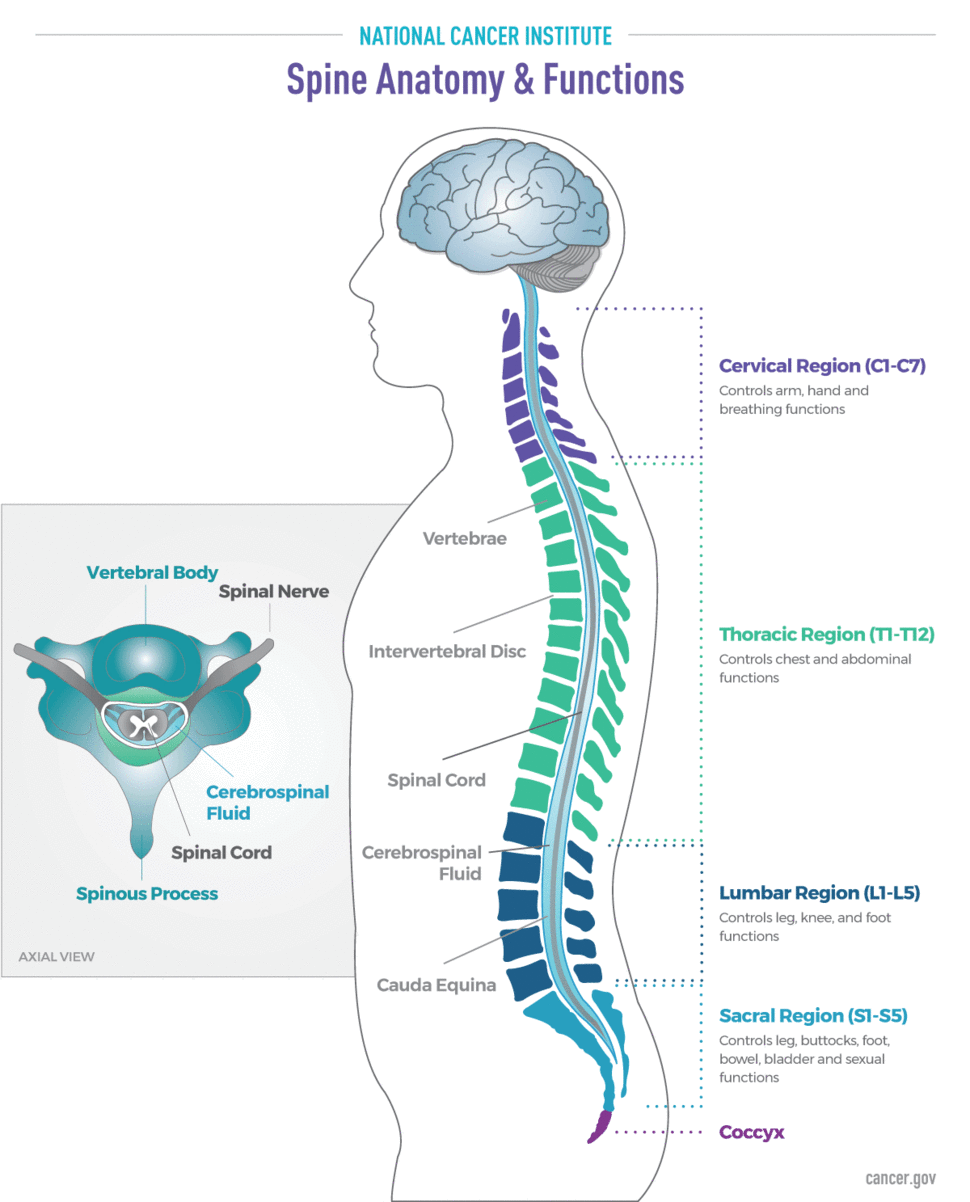The brain controls many important body functions, such as emotions, vision, thought, speech, and movement. The spinal cord connects the brain to nerves in most parts of the body. This allows the brain to send messages throughout the body. The network of the brain and spinal cord is called the central nervous system (CNS). It is important to know your tumor location in the CNS to understand your symptoms and how your tumor may impact body functions.
Brain Anatomy and Functions
The brain is divided down the middle from front to back into two halves called the cerebral hemispheres. Each hemisphere is divided into four lobes: frontal, parietal, occipital, and temporal. Brain tumors located in the lobes are called supratentorial, and tumors located in the cerebellum or brainstem are called infratentorial.
Brain tumors, regardless of their location, can cause headaches, seizures, and problems with multitasking. Below, learn about specific changes you may experience based on your tumor location.
Spine Anatomy and Functions
Spinal cord tumors are described based on where on the cord the tumor is located, and each vertebra is numbered from top to bottom. The neck region is called cervical (C), the back region is called thoracic (T), and the lower back region is called lumbar (L) or sacral/cauda equina (S).
Tumors are further described by whether the tumor begins in the cells inside the spinal cord (intramedullary) or outside the spinal cord (extramedullary). Extramedullary tumors grow in the membrane surrounding the spinal cord (intradural) or outside (extradural).
Spinal cord tumors, regardless of location, often cause pain, numbness, weakness, or lack of coordination in the arms and legs—usually on both sides of the body. They also often cause bladder or bowel problems. Below, learn about specific changes you may experience based on the tumor location.
Body function changes can be caused by the tumor itself or from treatment. Talk with your health care provider about any concerns. He or she can assess your problems and suggest options to help manage them.

